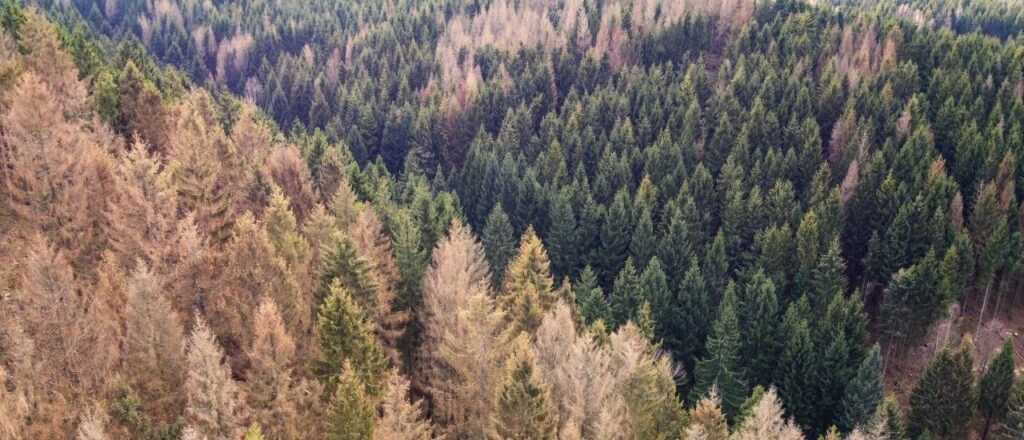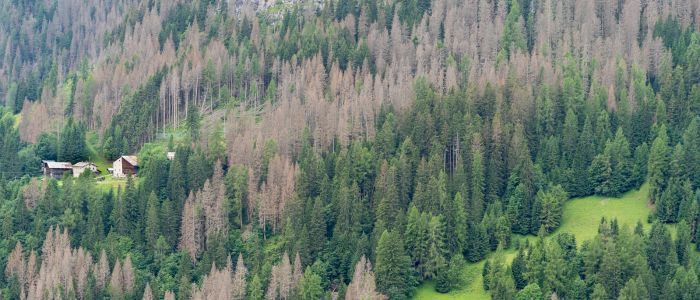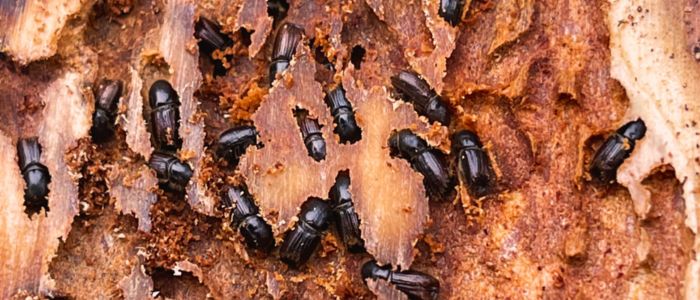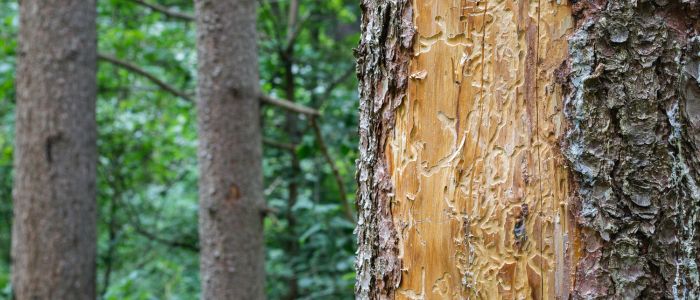/
The Bark Beetle in the spruce forests and the fragility of the ecosystem
Bark Beetle: how this Insect is devastating alpine forests and what we can do to counter it

In recent years, Alpine forests have been facing an unprecedented crisis. Entire expanses of spruce trees, once symbols of these landscapes, are dying due to the uncontrolled spread of the spruce bark beetle, a small beetle that compromises tree health.
But this emergency is not just the result of the parasite’s action: it is the consequence of decades of forest management based on monoculture and the acceleration of climate change. Extreme events, such as the Vaia storm of 2018, have further exacerbated the situation, making a new approach to forest management urgent.
Content Index
- Climate change
- The amplifying factor
- Vaia: The catalyst for disaster
The alpine forest crisis: when the spruce bark beetle reveals the fragility of our forests
Looking at the alpine valleys today, the landscape is dramatically different from what we were used to. Entire mountainsides are characterized by dead-standing spruces, their reddish crowns acting as silent sentinels of an unprecedented environmental crisis. This transformation is not only the result of the spruce bark beetle attack but the consequence of a complex chain of events rooted in the history of Alpine forest management.

A century of choices that shaped our mountains
The Alpine forests we know are the result of deliberate management choices that, for decades, have favored spruce over other species. The reason was mainly economic: its high-quality timber and rapid growth made it the ideal species for forestry production. This preference led to the creation of vast monoculture areas, radically transforming the mountain landscape.
In these artificially uniform forests, spruces adapted to growing in dense formations, developing very specific characteristics. Their crowns concentrated at the top of the trunk, while their root systems remained relatively shallow. The trunks grew straight with few lateral branches, in constant competition for light. This structure, seemingly efficient for production, hid vulnerabilities that are only now becoming fully apparent.
The bark beetle: from natural regulator to systemic threat
In this scenario, the spruce bark beetle—a small beetle of the Scolytidae family that does not exceed 5 millimeters in length—plays a critical role. Its biology is fascinating in its complexity: females bore into the bark of spruces, creating mating chambers where, after copulation, they dig galleries to lay up to 80 eggs. The larvae then create an intricate system of perpendicular galleries, irreversibly compromising the tree’s ability to transport sap.
Under natural conditions, this insect plays a crucial ecological role, contributing to forest renewal by selectively eliminating weaker individuals. Its population remains balanced thanks to natural predators and the resilience of healthy plants. However, this delicate balance has been completely disrupted by climate change and extreme events in recent years.

Climate Change
The amplifying factor
Global warming plays a crucial role in this crisis. Rising average temperatures, particularly evident at higher altitudes, are profoundly altering the physiology of Alpine forests. Increasingly irregular precipitation and prolonged drought periods subject spruces to growing hydraulic stress, while extreme weather events challenge their mechanical resistance.
For the spruce bark beetle, these new conditions represent an unprecedented opportunity. Milder temperatures allow for more frequent reproductive cycles and lower winter mortality, while the general weakening of plants provides fertile ground for its expansion.
Vaia: The catalyst for disaster
The Vaia storm in October 2018 marked a turning point. In just a few hours, over 8 million cubic meters of timber were felled, damaging more than 42,500 hectares of forests. But Vaia’s true impact goes far beyond the numbers. The surviving spruces, accustomed to growing in dense formations, suddenly found themselves isolated, their bare trunks exposed to relentless sunlight for which they were not prepared.
This environmental shock created the perfect conditions for the proliferation of the spruce bark beetle. Weakened trees began to emit chemical signals that attracted the parasites, while increasingly high temperatures allowed the beetle to complete up to three generations per year instead of the traditional one or two.

Towards a new forest management approach
The current crisis forces us to radically rethink our approach to forest management. It is no longer sufficient to monitor bark beetle populations or promptly remove infested trees. A paradigm shift is needed, one that prioritizes the diversification of forest species and the creation of more resilient ecosystems.
The forests of the future must be more heterogeneous, with a greater variety of species capable of withstanding climatic stresses. Forestry must evolve, abandoning the monoculture model in favor of more natural approaches that respect and enhance biodiversity.
Nature will find its balance, but the speed and direction of this change will depend on our choices. The challenge is not just technical or scientific but cultural: we must learn to see forests not just as timber producers but as complex ecosystems on which the stability of our mountain territories depends.
The red crowns of dead spruces remind us that the time for simplifications is over. The future of Alpine forests will be more complex, more diverse, and, hopefully, more resilient. It is up to us to decide whether to lead this change or passively endure it.
What we can do together
The VAIA mission
Through our project dedicated to the spruce bark beetle and the purchase of Vaia People, you can directly contribute to the intelligent reforestation of affected areas, supporting the planting of resilient tree species and promoting forest biodiversity.